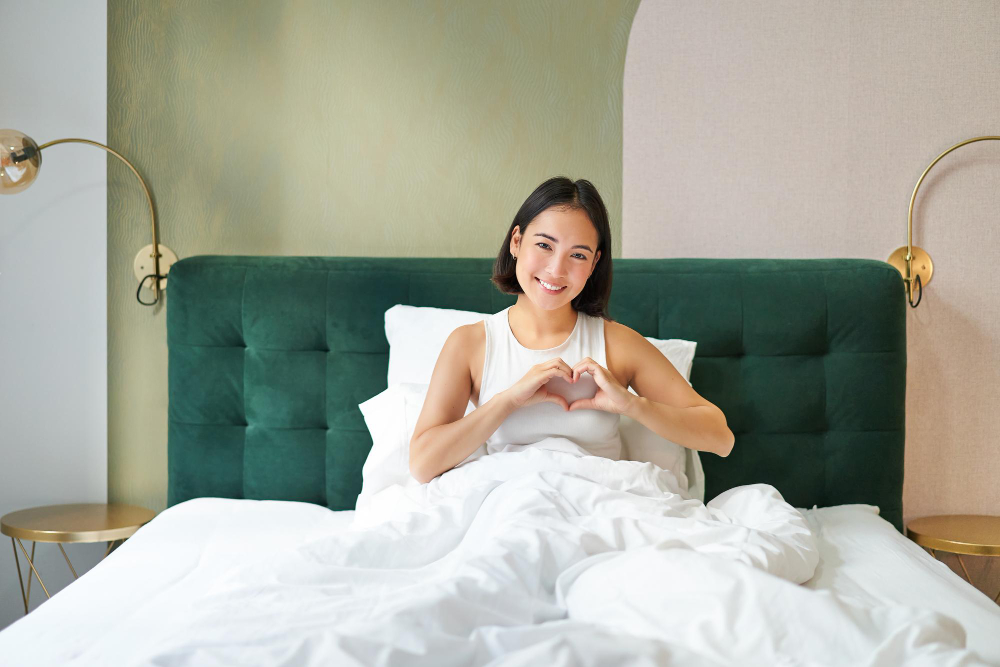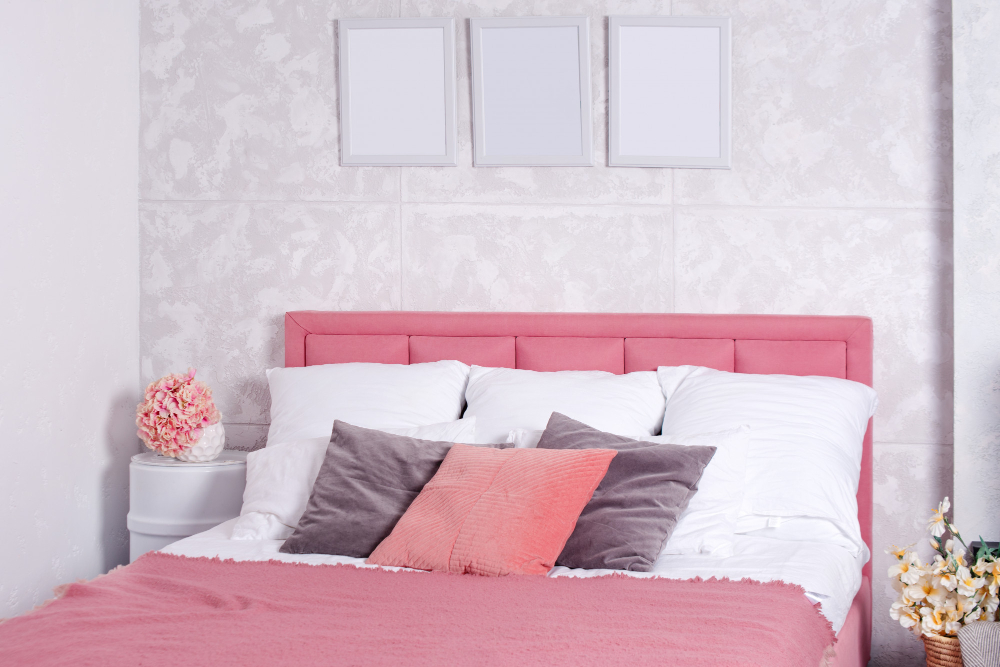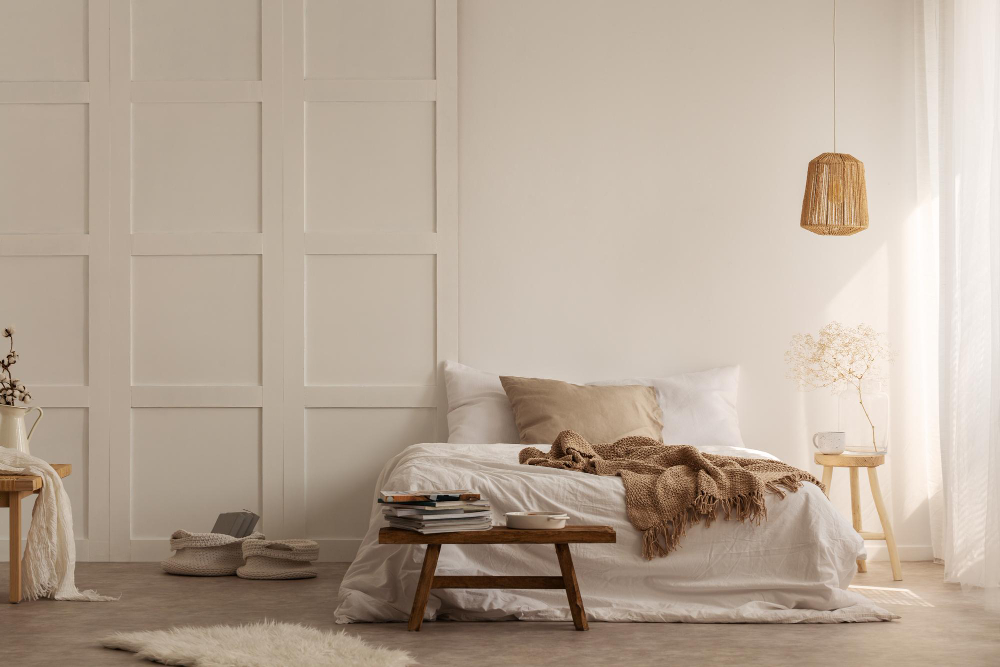Calming Bedroom Colors to Define Your Visual Space

The bedroom is the most intimate space in your home. It should be a place where you can feel relaxed and calm. This means choosing the right colors for your walls, bedding, and other design elements will help achieve a relaxing space.
The psychology of color is fascinating, so we’ll take a look at how different colors affect emotions and behavior before diving into what specific hues to use in your bedroom.
Benefits of Calming Bedroom Colors
Calming bedroom colors are invaluable for helping you sleep better, reduce stress and anxiety, improve your mood, and focus on work. These colors can also help you relax and feel more at ease in your bedroom.
A calming bedroom color scheme provides a sense of calmness and peace that helps you sleep better at night. A study revealed that participants who slept in bedrooms painted with calming colors were able to fall asleep faster compared to those who slept in rooms painted with neutral hues or harsh shades like black or red.
How Color Affects Emotions and Behavior
Have you ever noticed how certain rooms in your home seem to make you feel more at ease and relaxed? Or, conversely, how some rooms can make you feel agitated? Color is a major element of this effect.
You may notice that certain colors stimulate a strong emotional response in you. This is because every color has its own meaning and vibration that can affect your moods or behavior depending on the context surrounding it—including other colors around it and even the room itself.
The Psychology of Color
When choosing colors for your bedroom, you should consider not only how the color will look but also how it will affect your mood and energy level. Colors can have a positive or negative effect on our sense of well-being; they can help us relax or make us feel anxious.
There are two main psychological theories that explain how color affects people: the arousal theory and the affective valence theory. The arousal theory says that warm colors like red, orange, and yellow create excitement while cool colors such as blue, green and violet are calming. The affective valence theory says that reds and oranges tend to be activating while blues are calming; however, since these colors also vary in temperature (warm vs cold), there is no one-size-fits-all explanation for which color creates what effect.
The bottom line is this: You should choose a soothing palette for your bedroom because it’s an important space where you spend time relaxing before bedtime. Here are some colors to try:
Relaxing Blue
The color blue is a calming shade and can be used to create a calming space. Blue is a good choice for the walls and bedding, but you can also use it as an accent color in other parts of the room such as pillows, bedroom furniture, or curtains. Blue bedrooms give off a cool feeling.
The most common types of blue are Soft blue (light blue), Navy Blue (a dark navy), Sky Blue (light sky blue), Turquoise (light greenish blue), and Teal (a medium greenish blue).
Earthy Green
If you’re looking for a calming bedroom color, earthen tones are a good fit. The earthy hues of brown and green are known for their ability to balance your energy and help you feel grounded. They can also be used in a variety of other rooms in your home, from the living room to offices.
Green is one of the most popular colors in nature, making it an excellent choice when creating a soothing space. Green has been shown to promote tranquility, so it’s beneficial if you have trouble sleeping at night or are trying to create an environment that promotes relaxation.
Pretty Pink
As the name implies, this is a very feminine color that can be used to create a romantic or relaxing environment. It’s also helpful for creating a calming effect in children’s rooms. This color is best used in small bedroom spaces such as the upholstered headboard of a bed in a bedroom or sitting room, where it will have less impact than it would on larger walls.

Luxurious Lavender
If you’re looking for an alternative to pink, lavender could be just what you need. Lavender has some of the same characteristics as pink but comes across as more mature and sophisticated. It works well with neutrals like black and white because it adds depth to an otherwise dull palette without overwhelming it with too much color.
Walls painted with lavender is a calming, romantic color that will help you relax in your bedroom. It’s also associated with luxury and romance, which makes it an ideal color for your bedroom. If you want to use this soothing shade in your space, consider pairing it with other calming colors such as beige or white.
Lavender has been used as an accent color in bedrooms since the 19th century; however today it can be seen on walls as well as accessories like cozy bedding and artwork. This traditional hue is traditionally paired with paint colors such as reds, pinks, blues, or greens—but if these don’t fit into your design scheme you can use them alone.
Muted Grey
Muted grey is a soothing color that works well in a master bedroom. It’s also a good choice for small spaces, as it helps to open up a room and make it appear larger than it actually is. This hue can be used in combination with other lighter shades, such as white or cream. Muted gray are great when paired with crisp white walls.
In creating your space, you’ll want to make sure that you have enough lighting to illuminate all corners of the room, especially if your room has high ceilings or large windows (both of which tend to create more shadows). A floor lamp can be especially helpful in these cases, but additional overhead lighting may also be necessary if you’re concerned about lighting quality and quantity. Natural light is also preferable in interior design for a restful sleep.
Warm Beige and Cream
When it comes to choosing the right paint color for your bedroom, beige is a color that cannot be ignored. Beige is one of the most versatile neutrals and can be used as an understated backdrop for other colors or as an accent color in its own right.
In addition to being a calming bedroom choice, beige is also easy to work with because it’s so flexible. It pairs well with any other neutral tone on the color wheel, with dark shades, and works well as an accent or main wall color depending on how you use it.

Modern Bedroom Decorating Ideas
Choosing the right bedroom colors can help you create a calming environment. To be effective, your choice of color should be soothing and calming, but not too bright or dark. It should also not be too warm or cool—too much red, orange, and yellow in the shade will make the room feel too cozy; while blue and purple hues will make it feel cold instead of cozy.
The best colors for this purpose include light shades of green and white because these colors evoke feelings of security and relaxation without being harsh on the eyes (as opposed to bright yellows). Another option is blue because it induces sleepiness without making people anxious about waking up early in the morning.
When it comes to choosing bedroom colors, there are a lot of different factors that need to be taken into account. You want a look that’s both relaxing and soothing, but not boring or bland. You also want something that will help you achieve the kind of sleep you need each night in order for you to function well during the day.




